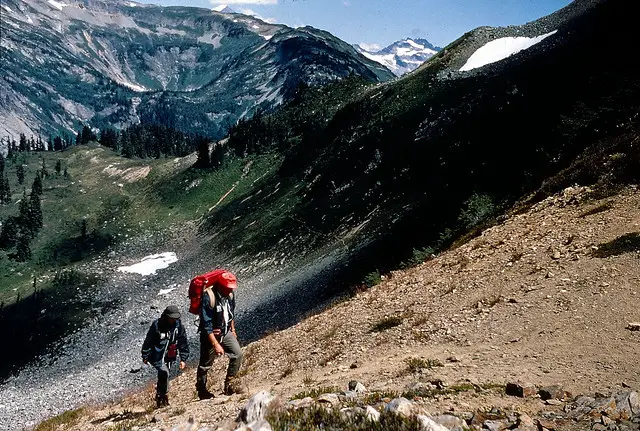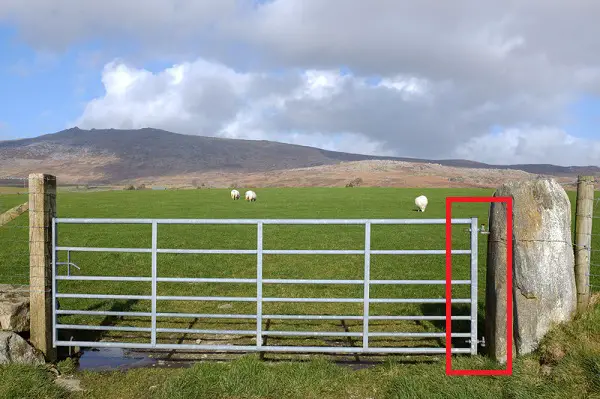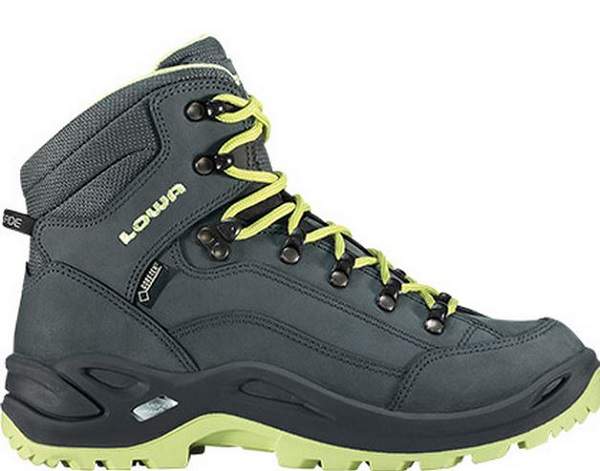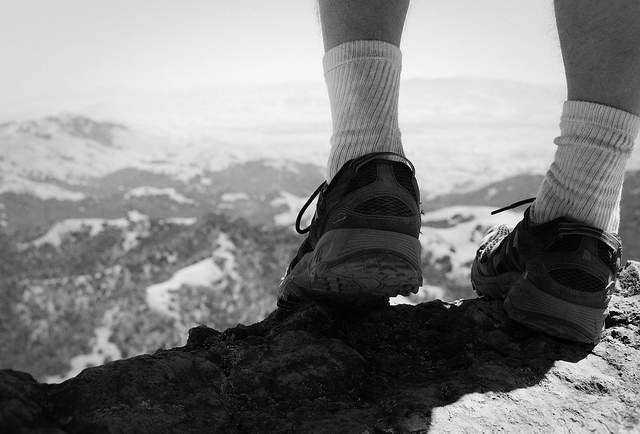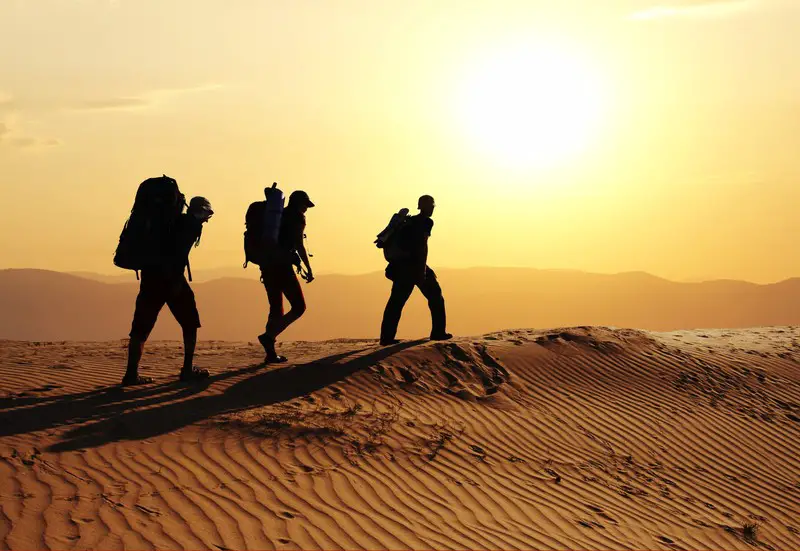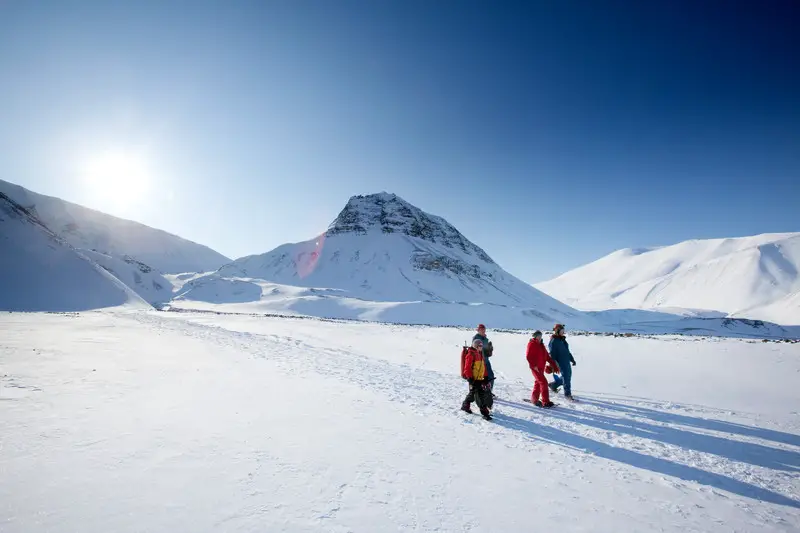As a regular hiker I often spend time hiking over, across, etc. mountains. With that in mind I was always curious what the difference was when I heard someone using the term mountaineering, when referring to their activities in the hills, rather than simply hiking.
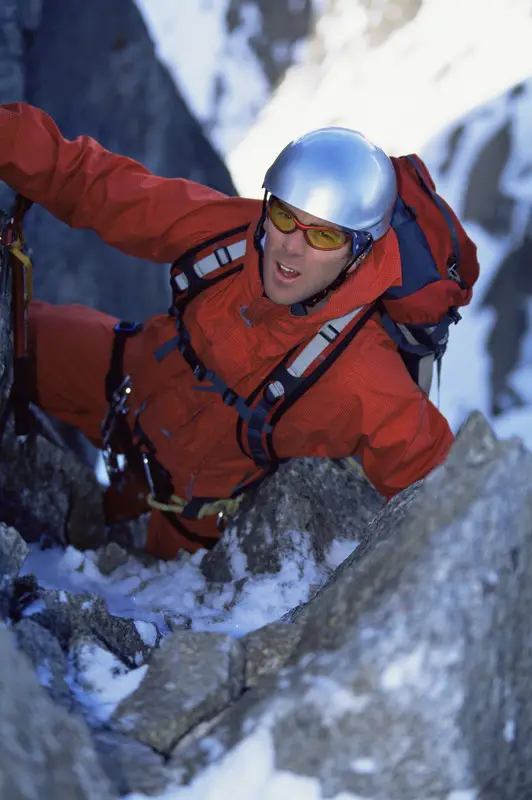
OK, well first off I guess you can hike anywhere. I recall reviewing into the difference between hiking and walking in another post some time back. In it I made the distinction that hiking usually involved going over some kind of natural terrain, like mountains, while walking was just going out on your local roads for a stretch of the legs.
However, it is worth noting that the natural terrain to hike on doesn’t always need to be mountains. Hiking in a desert is a good example where you may not need to climb or cross any mountains but you’re not going out for an easy stroll! In contrast, mountaineering obviously implies that mountains are involved in some form.
So with that in mind, I had an idea but wasn’t 100% sure how ‘mountaineering’ was defined, if at all. One thing I had noticed though was that it was only ever very experienced ‘hikers’ who would ever refer to any of their activities as mountaineering as opposed to just hiking.
So what is the Difference?
Yesterday I returned from my ‘mountaineering’ (I am using the word appropriately here I believe 🙂 ) trip to the Alps. I was away for a week and I am happy to say that I got to successfully summit both Gran Paradiso and Mont Blanc!
I will of course be doing some detailed posts on these in the very near future but as a background to this post, as part of the trip we had experienced guides to take us to the summit for both climbs. This is an absolute necessity as it is dangerous in the Alpine environment if you do not know what you are doing. Therefore, experienced guidance is not optional.
Anyway, the lead guide for the trip has over 25 years of experience in the Alpine environment and on the initial climb to a hut before the summit attempt for Mont Blanc, I overheard him using the term mountaineering when referring to our summit attempt in the days ahead. It immediately occurred to me, could there be a better man to ask this question of than him?
So, I asked him and his answer was beautifully simple and sweet. In short, he said that in mountaineering you use your hands. When you’re just hiking, the use of your hands isn’t necessary. Beautiful!
What Does it Mean to use your Hands?
Now, I should add some points of clarification to this and perhaps risk stating the obvious. However, by ‘using your hands’ he was, as I am now, referring to needing to use your hands on or with natural obstacles or terrain to pass or overcome them as you hike and climb up a mountain.
Therefore, it does not mean using your hands to hold walking poles or climb over a fence. Rather it refers to anything from continuous scrambling over rocks right the way up to full on rock climbing.
Note: there are a lot of levels in-between the levels of scrambling and rock climbing.
I am not a rock climber but scrambling is something I have done on many occasions, that’s me scrambling in the photo below, while out on the trail. It sits at the easier end of the climbing spectrum and refers to having to use your hands to negotiate rocks or other terrain in your way on the trail.
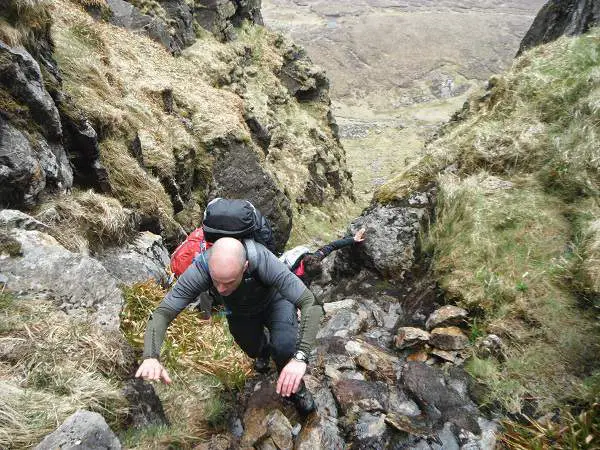
That is, your legs aren’t enough to get you by and it’s sometimes, although not always, tricky enough that you may also need to employ some basic climbing gear e.g. helmets, harnesses, roping using karabiner clips, and so on. We needed to wear that gear in the Alps last week as the scrambling was of a significantly dangerous enough level to warrant it. That may not always be the case though.
It’s also worth noting that using your hands can mean having to use them with various tools to help move you along the trail e.g. an ice ax.
Conclusion
So that’s it for today’s brief post. Hopefully this has been of interest. It was nice to get a perspective or two on the term ‘mountaineering’. I should add that there are also a whole host of other mountain skills involved in mountaineering that extend beyond simple hiking. However, I think for ease of use this was a nice, quick and easy way to note a considerable difference between the two activities.
I for one, quite enjoy a bit of scrambling while out on the trail but I don’t think that full on rock climbing would really be for me. You may hate the thought of ever having to use your hands to hoist your body over rocks or any obstacle while out on the trail. I guess that that’s the real beauty of the great outdoors though, there is something there for every level of skill and everyone to enjoy!
Do you like to scramble or climb while out on the trail? We’d love to hear about it in the comments below.
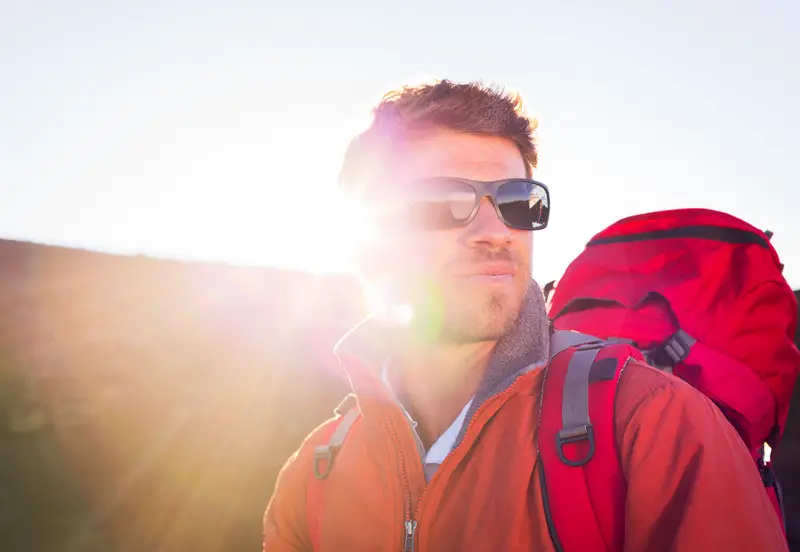

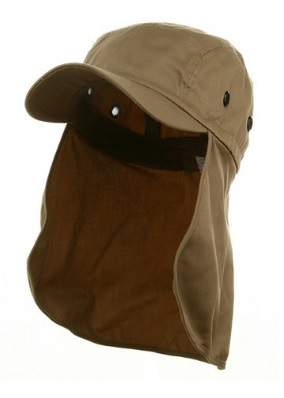
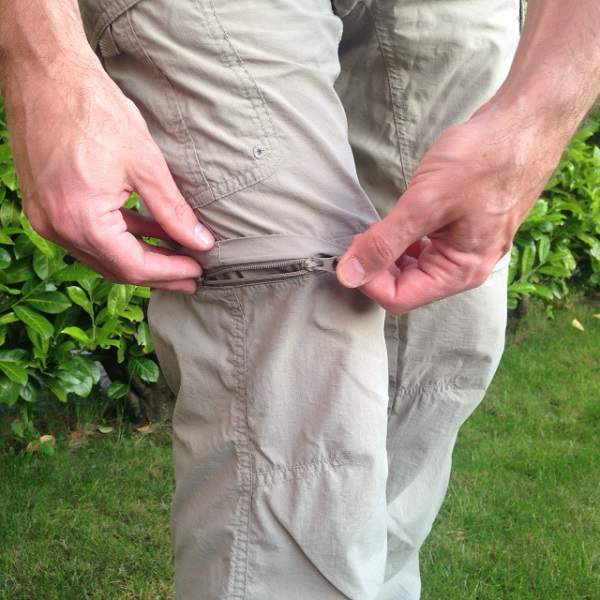
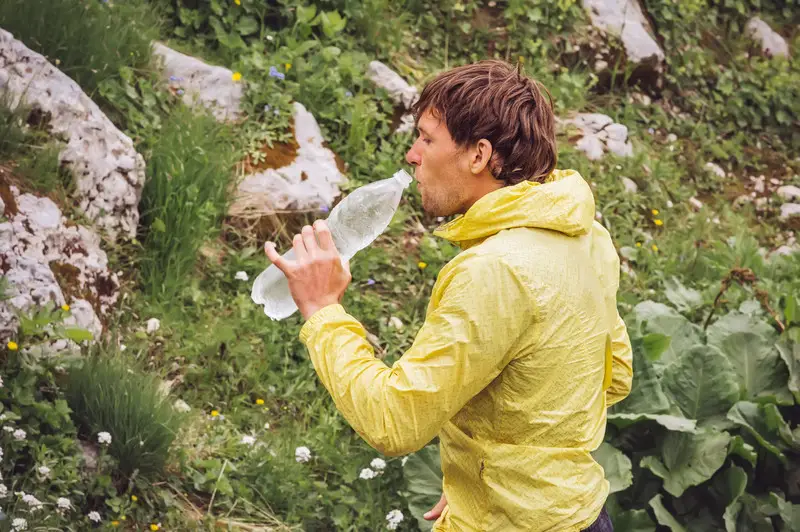

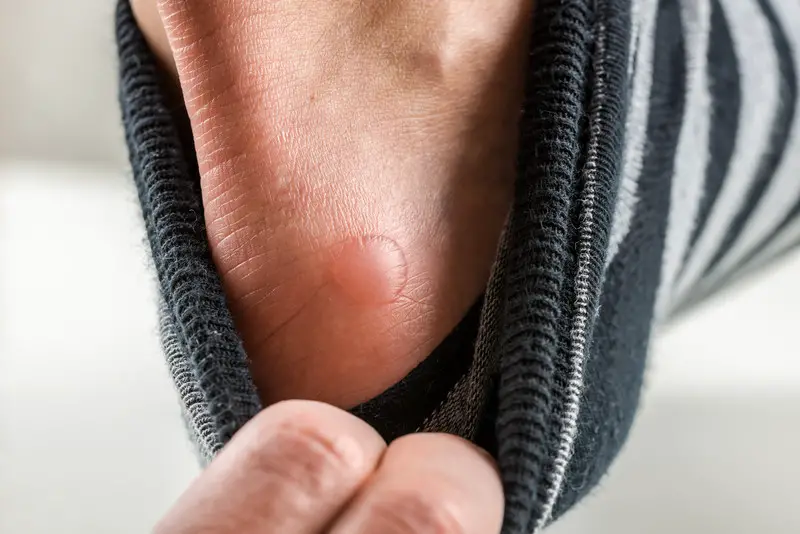



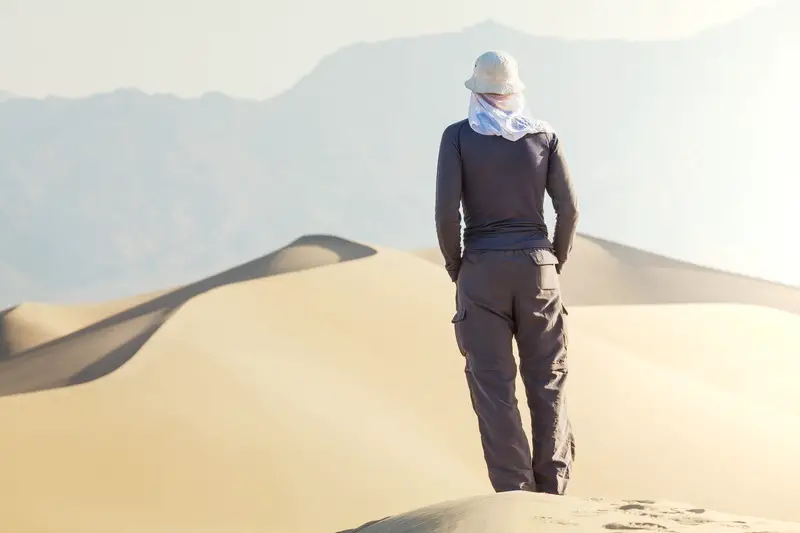
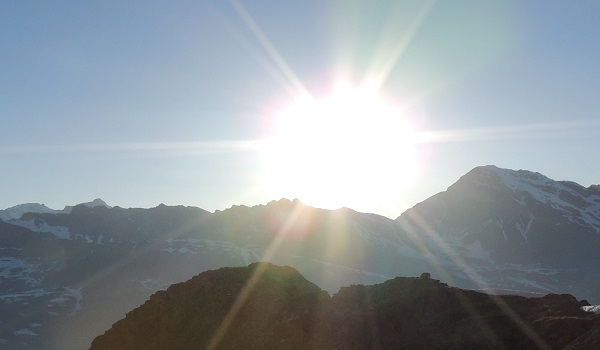
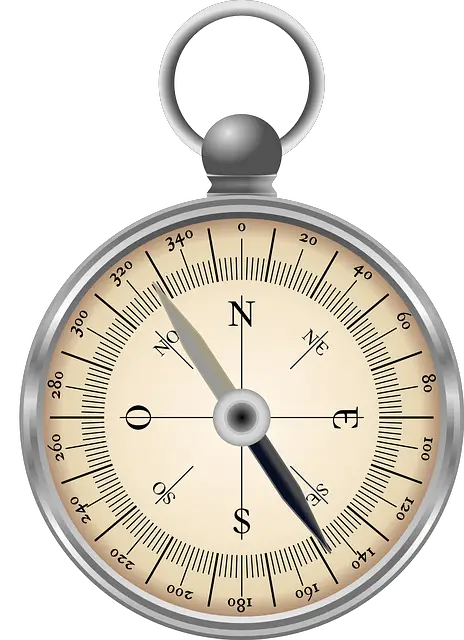

 As expected both groups reached the stepping stones at the same time and one of the other party went to start to cross but another man in their group told them to stop and let us pass first.
As expected both groups reached the stepping stones at the same time and one of the other party went to start to cross but another man in their group told them to stop and let us pass first.